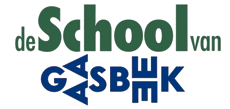Presentation in English
‘That’s a good idea’
For over ten years, De School van Gaasbeek
Since the summer of 2013, the old town hall and the former school in Gaasbeek have come back to life. As a unique place for cultural activity. Unique because of its rich history and its distinctive location in the rural outskirts of Brussels. The initiators—Hugo De Greef, Stefaan Loeckx, Elke Janssens, Christel Simons, Hugo Van Den Driessche, and Karlien Vanhoonacker—decided to open up this space for artists. Thus, “De School van Gaasbeek” was born. It was given the subtitle “platform for creation and residence” as an explanation. Already a program in itself. Essentially, it became a workspace for artists with residency opportunities and a setting for public cultural activities.
Within the current, highly dynamic arts landscape, where the (Brussels) workspaces for artists are bursting at the seams, a new possibility presented itself—atypical within the existing offer and with a very distinctive capacity. The commitment of the initiators, experienced individuals across generations, points to a project that will secure its place in the cultural scene. The place has an energy. You don’t waste energy; you use it to do beautiful and good things.
–
Gaasbeek is one of the most beautiful municipalities in Flanders.
Right in the almost untouched Pajottenland. Gaasbeek has avoided urbanization and has retained its rural character, something that is now carefully preserved by artists. It is a magnet for artists. The advantages of the rural environment are numerous, and have been praised for centuries by artists and artist collectives. Away from the hustle and bustle of the city, there is silence, peace, time, and a slower pace. Art and ecology are, in fact, the new avant-garde — a distinctive fusion of art and social intervention. The “platform for creation and residence” has been inviting artists for ten years to sharpen their creativity by working in Gaasbeek.
As a spectator, as a visitor, as a reader, you enjoy the work, the artwork. For the artist, the writer, there is a process of working beforehand. The artist seeks the best possible conditions to work, and society offers these conditions, whether they are useful or not.
In the arts, residencies have been around for ages. Centuries ago, artists were invited to reside at courts, in churches, or on estates. Just look at the eminent artists and intellectuals who came to Gaasbeek Castle at the invitation of the marquise. Artists are an inseparable part of a community. An environment nurtures the artist and the artwork, just as art enriches the environment in return.
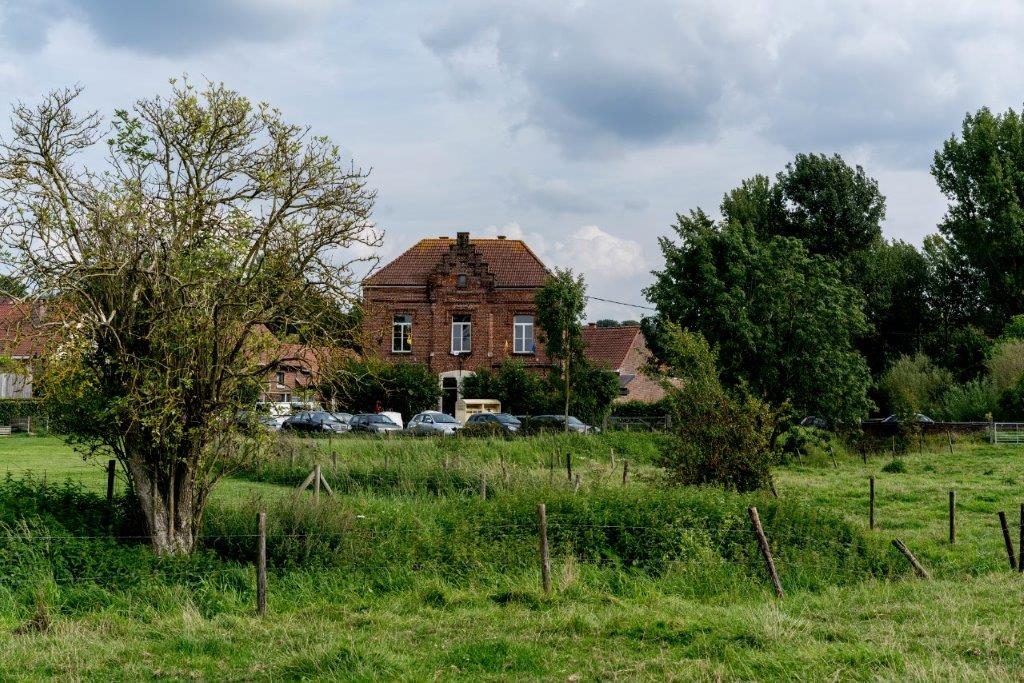
At the request of the initiators of the new association, the municipality of Lennik made the former town hall and the adjacent village school in Gaasbeek available during the summer of 2013 with the aim of developing cultural activities there. Earlier that year, we made the proposal to the mayor and aldermen to repurpose the buildings. When the association pointed out to the mayor that the former school was unused and somewhat neglected — why not turn it into a residency space for artists? — she responded with the encouraging, brief sentence: “That’s a good idea.” We still cherish this joyful confirmation as a motivating call.
For completeness, it’s worth mentioning that the proposal had already been tentatively discussed in 2012 with the then Alderman of Culture, Geert De Cuyper. He responded very enthusiastically and agreed to work out the details after the elections. A different majority reached a governing agreement starting in 2013, so the commitment and enthusiasm of the new municipal government as well as the new opposition were immediately evident. It was agreed to launch, develop, and shape the project for a period of five years, until the end of 2018. After the 2018 elections, the nearly identical majority considered the agreement extended, although the municipality did not formally finalize this. However, in 2022, a collaboration agreement was reached with the municipality of Lennik, solemnly signed by the Alderman of Culture, Johan Limbourg, primarily aimed at supporting the project and exploring a future for the buildings. This came with an annual support of €5,000.
Now, in 2024, there are again municipal elections. And we are looking forward to a new collaboration agreement with the municipality of Lennik, and especially to see what future the municipality envisions for these unique buildings in the small village of Gaasbeek.
–
A lot happens in ten years.
Although De School van Gaasbeek is a very young organization, it already has an impressive track record. This includes organizing a number of high-quality activities, hosting numerous residencies for national and international artists from various disciplines, and consistently attracting a pleasant amount of public interest.
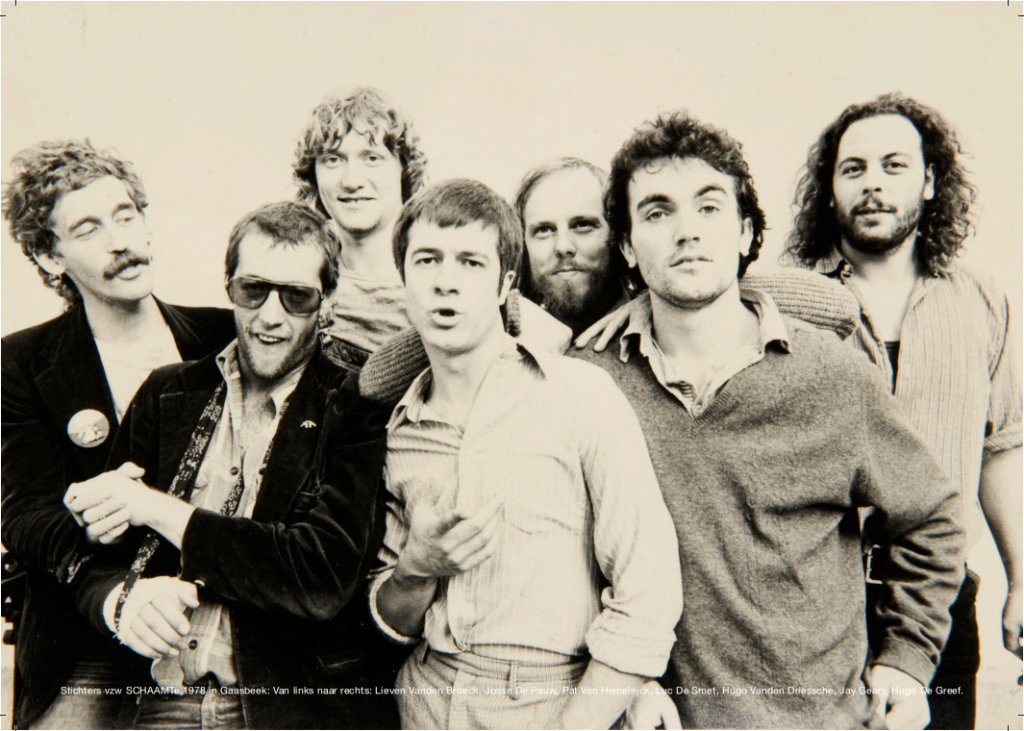
–
De School van Gaasbeek, however, looks back on a much longer and particularly rich history. De School was indirectly at the cradle of the so-called “Flemish Wave,” which, especially in the 1980s, first swept across Flanders and later the whole of Europe. It was in that same school in Gaasbeek that “Schaamte vzw” was founded in 1978, the organization that would later, in 1986, merge into Kaaitheater. Pat Van Hemelrijck, Josse De Pauw, Luc Desmet, Eric De Volder, Dirk Pauwels, Anne Teresa De Keersmaeker, and Jan Lauwers were members of the association at the beginning of their careers. Even Jan Decleir was a valued member for a while! Most of them rehearsed and held meetings in the school at that time. At the playground, at the end of May 1978, the legendary group Radeis premiered their first show, Radeis wegens Ziekte. Theater zonder veel cinema (Radeis due to Illness. Theater without much cinema). In 1986, the association was restructured into the current Kaaitheater.
The rest is history.
Although De School van Gaasbeek certainly does not want to be, and is not, a historical counterpart of “Schaamte vzw,” the historical connection made during the start-up serves to strengthen the current operations and to foster involvement, dialogue, and mutual commitment between more experienced and younger generations of artists. The presence of Hugo De Greef as chairman of the board and Hugo Van Den Driessche as a board member will also ensure that a historical link between the two “eras” can be made and kept alive. This is particularly tangible in the annual SeptemberFestival, where we bring together “experience and innovation.” And it works. In every edition of the SeptemberFestival, it has been striking how the audience enjoys both the experience and, what sometimes proves more challenging, the innovation.
–
The residency and workspaces have been heavily used over the years. Artists, young artists, from the fields of dance, theater, music, visual arts, literature, and more fill the spaces! The residencies remain the essence of the work. De School van Gaasbeek is especially selective when responding to residency requests. This explains why it’s often quite busy there. Every day, over the past ten years, starting from day one, there have always been artists at work.
To date, a total of 226 artists have come to work, create, and perform here! They come from all corners of the world.
Throughout the years, De School van Gaasbeek has had several permanent residents: philosopher, writer, and journalist Anna Luyten; photographer Maarten Vanden Abeele; and dancer and choreographer Cassiel Gaube.
De School van Gaasbeek has collaborated closely with many partners over the years. This includes MuseumCultuur Strombeek/Gent, Anne Teresa De Keersmaeker’s dance school PARTS, students from art schools like KASK (Ghent), Pianofabriek, de Toneelschool Maastrischt, and het Kasteel van Gaasbeek, among others.
In the meantime, the residency program has expanded. Since 2023, there is ‘Hermitage,’ a new space in the Gaasbeek castle park, offered to us by het Kasteel van Gaasbeek. In collaboration with them, it has become a residency with the concept of “one place, one year, one artist, one creation.” Stefan Hertmans was the first artist to work there for a year on his novel Dius.
Starting in the fall of 2024, De School van Gaasbeek will have access to yet another new residency, ’the room in the castle’ at het Kasteel van Groenenberg. With ‘Hermitage’ and ’the room in the castle,’ the work continues to develop the region into a “landscape for artists.”
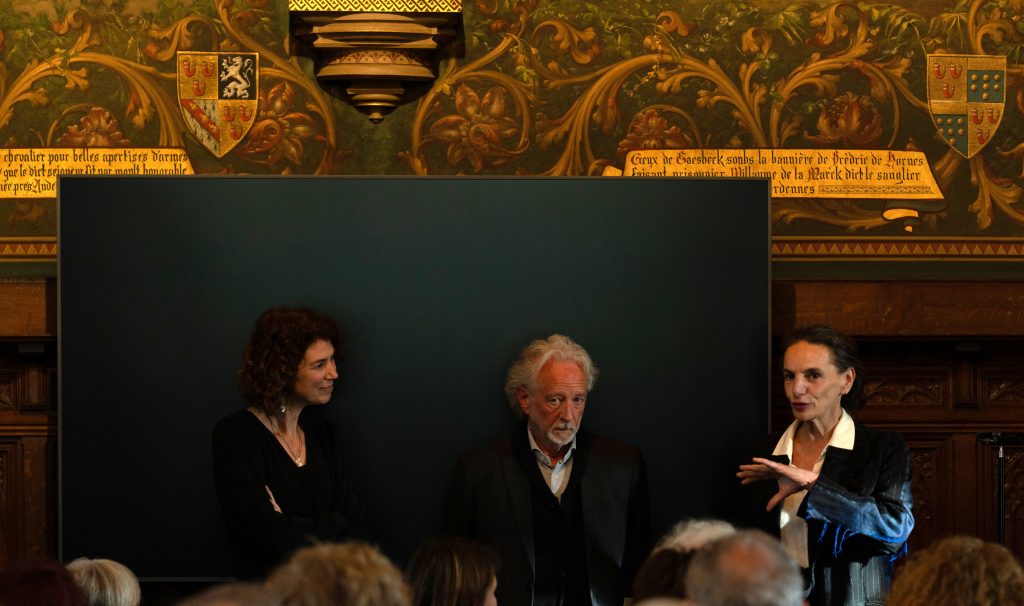
–
The informal association ‘The Friends of De School van Gaasbeek’ was established in 2016 at the initiative of Piet Van Waeyenberge, a committed resident of Gaasbeek. He was chairman of ‘The Friends of De School van Gaasbeek’ from 2016 until 2019, when his son Thomas took over the role. Since 2016, ‘The Friends of De School van Gaasbeek’ have organized the annual Friends’ Evening. By now, we have already had seven Friends’ Evenings. For four years, this took place as the Summer Concert in the small church of Gaasbeek—warm moments where we could offer the friends an exceptional concert. In 2016, it was with Jos van Immerseel, in 2017 with Jos van Immerseel and Ayako Ito. In 2018, the friends enjoyed BL!NDMAN [sax] & Eric Sleichim, and in 2022, Bacchus Brassband. In 2019, the Friends’ Evening took the form of a Bruegel exhibition titled Al de Bruegels in the classrooms.
In 2023, we had the Summer Theater with the performance Wortels by Bruno Vanden Broeck. And in 2024, the Friends’ Evening was an evening during the SeptemberFestival featuring Jan De Smet, solo.
Over the years, 284 friends have joined for one or more years. The financial support from all these friends that De School van Gaasbeek can gather through this has become one of the pillars that makes the operations possible. But in addition to this “necessary funding,” the performance itself, and the support, the Friends’ Evening is always a pleasant get-together and a moment for connection.
De School van Gaasbeek is also supported by patronage. For example, Thomas Van Waeyenberge and Piet Vanthemsche have been patrons of the school for many years. There is also a third anonymous patron who supports the operations annually.
Additionally, the school receives strong support from the MarnixRing, Land van Gaasbeek. For about three years, there has also been support from the ‘Orde van den Prince, Pajottenland.’
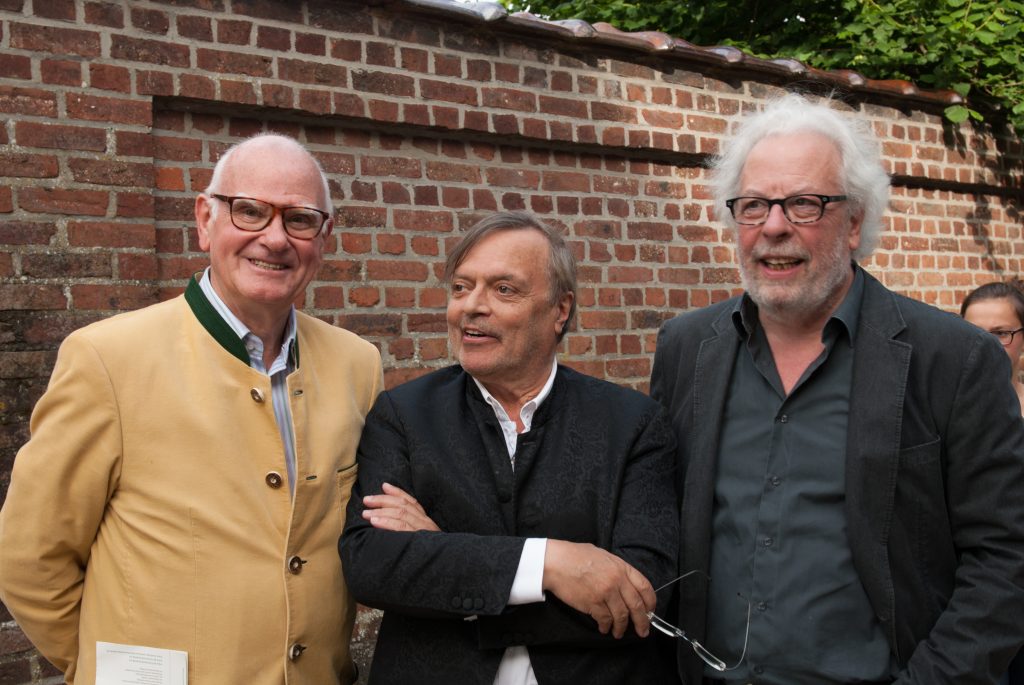
–
With the annual SeptemberFestival, De School van Gaasbeek is at its most visible. In 2024, we will already celebrate the 10th edition. During the festival, we bring together young talents, usually residents from the year, alongside experienced, well-known figures from the arts world. Big names and new talents alike have performed at the festival, presenting pieces of unknown work, adaptations of existing works, surprises, and more. Over the course of ten editions, an eminent group of artists has passed through.
Since the second edition in 2015, every SeptemberFestival has included a Poetry Sunday, curated in collaboration with Sigrid Bousset. This has brought the country’s greatest poets to Gaasbeek, resulting in another impressive list. Always with the support of het PoëzieCentrum.
Primarily Flemish but also international artists have participated during the SeptemberFestival days. The village, filled with colorful and enthusiastic guests, seemed almost more cheerful as a result. Big names and new talents alike have performed at the festival, offering pieces of unknown work, adaptations of existing works, and surprises!
The festival is also an inviting and accessible offering for the people of Gaasbeek and Lennik. De School van Gaasbeek has been able to give something back and provide its operations with a public dimension.
–
When Isabel Lowyck became the director of het Kasteel van Gaasbeek in 2023, she immediately wanted to collaborate with De School van Gaasbeek. We couldn’t have wished for anything better. And the first projects quickly took shape: collaborating on the SeptemberFestival, the Egmont Lecture, and the residency house, the Hermitage. But also a new winter event, WinterGloed, which saw its first edition in 2023.
These early collaborations are filled with plans for the coming years.
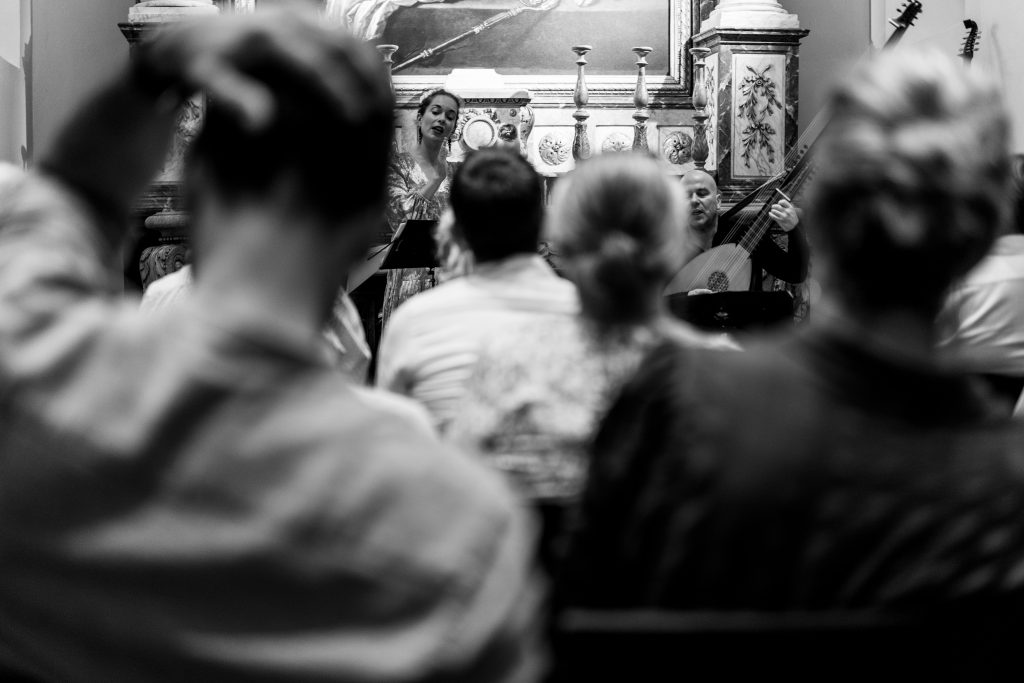
In those years, and for the coming years, the building itself — the former school and the old town hall — has become a challenging and stimulating project. Improvements made in 2017 aimed to create added value. Paul Robbrecht from the architecture firm Robbrecht-Daem was approached and agreed to design the renovation of the playground, the playground wall, the playground lighting, and a new school gate. Together with the municipality of Lennik, the works were carried out. Today, you can enjoy the renewed playground walls and especially the striking, very fine completely new playground. The greenery — sponsored by Ruisbroek Droomt — was also planted, and the delicate, very fine placement of the lighting is in place. The municipality of Lennik not only invested a substantial budget, but the technical teams of the municipality also executed the work. It remains pleasant to know that the municipal staff is extra motivated to work on exceptional and beautiful projects. The crowning achievement was the new school gate, an exceptional design by Paul Robbrecht. It was officially opened in 2017. An architectural masterpiece now enriches the school and the village square of Gaasbeek. We were able to finance the school gate with the support of private partners Piet Van Themsche and Piet Van Waeyenberge. It is important to note the very welcome support we received from Minister of Culture Sven Gatz. The entire improvement and the architectural value we can realize are thus made possible through a unique collaboration between the non-profit organization, the municipality of Lennik, private partners, and the Flemish government.
Architect Paul Robbrecht on the school gate: “… A gesture that strives for open-endedness and the hybrid, allowing for the other and the variable. Not a fence, but a skin that gives De School as a residency a new face; ‘In the design of the gate, you recognize a kind of dancing, writing, singing, and drawing. Here, artists reside.’”
In the meantime, we must acknowledge that the buildings have become worn out. The costs for heating and maintenance are no longer sustainable. Therefore, De School van Gaasbeek will no longer be the permanent user of the buildings starting in 2025. The municipality of Lennik will manage the building themselves from then on. De School van Gaasbeek wants to use it at specific times and for particular activities. However, the management of De School van Gaasbeek has linked this to a vision for the future. The desire remains to further develop this place as a cultural site. That is why De School van Gaasbeek has offered and invited the municipality to collaborate on a future vision. We are waiting for the new administration after the elections in October 2024 to determine whether this vision can be realized. We believe that this future exists in the spirit of “that is a good idea.”
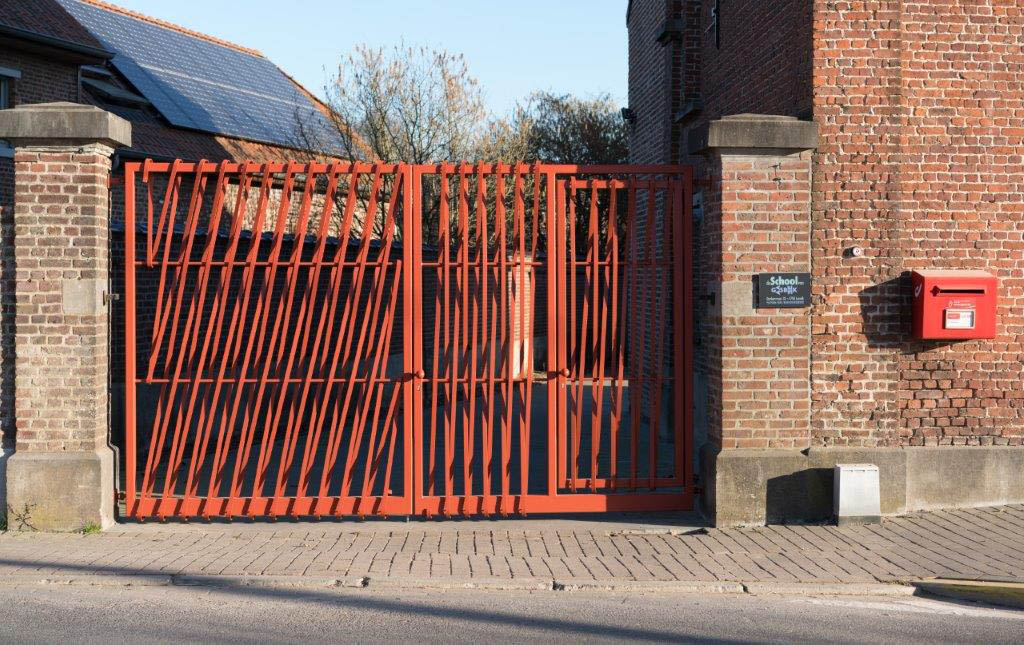
–
In the early years, De School van Gaasbeek occasionally received government support from the Flemish Government, especially during the tenure of Minister Joke Schauvliege. Afterward, the Province of Flemish Brabant provided some support as well. Following an agreement to transfer the cultural responsibilities of the provinces to municipalities and the Flemish government, Minister of Culture Sven Gatz also supported the operations of De School van Gaasbeek with a subsidy starting in 2018, which continued until 2020. After that, there was no further support from the government. We submitted many dossiers and made numerous requests. However, De School van Gaasbeek appears to be both too specific in relation to existing regulatory frameworks and too small to have a significant impact within the national policy, as well as too distant from perceived contemporary priorities and too connected to the past. Furthermore, the advisory bodies no longer fully grasp the entire reality of the arts field. A too fragmented knowledge and expertise among committee members and officials, constrained by a socially limiting discourse, narrows down the already supported arts sector. De School van Gaasbeek is one of those initiatives that straddles the boundaries of this narrowing.
Since 2022, the Municipality of Lennik has supported the operations with a modest but essential subsidy.
–
Highlights, there are many.
The enumeration of highlights inevitably leads to incompleteness, remains delicate, and does injustice to those who are not mentioned. There was the unforgettable performance of Josse De Pauw and Kris Defoort in 2014. Josse De Pauw returned in 2015. Could it get any more memorable? In the rain, under a small tent, he presented a unique theater concert with a selection of young musicians. The performance “Boerenpsalm” brought the young Martha Balthazar to a meadow in the village in 2021. Jan Decleir delivered a remarkable solo performance in the church of Gaasbeek in 2015. In the same church, Jos Van Immerseel, Ayako Ito, and the Blindman Quartet performed during VriendenAvonden. Anne Teresa De Keersmaeker came three times with a solo performance, especially in 2019 with the production “Somnia” featuring 45 students from PARTS in the forests of Gaasbeek. The still-young choreographer Cassiel Gaube landed in Gaasbeek in 2016 and became a permanent resident. He created his first choreographies there: “Farmer Train Swirl 2019” and “Soirée d’études 2021.” There were the nine PoëzieZondagen where almost all the poets that “matter” from Flanders performed. You had to have performed in Gaasbeek to belong. Each edition was organized in collaboration with the PoëzieCentrum. Director Lisaboa Houbrechts was first present as a member of the young company Kuiperskaai at the first SeptemberFestival in 2014 and later as a regular resident to work on her creations. Their performance “De Goudenberg Kronieken/The Goldberg Chronicles” was the very first evening performance at the SeptemberFestival in 2014. Lisaboa Houbrechts and the Kuiperskaai collective returned in 2015 with “Mariembourg.” There were numerous performances by the Koninklijke Harmonie St-Cecilia from Sint-Martens-Lennik on the village square of Gaasbeek. In 2016, the great Dutch actor Tom Jansen presented the touching “Datumloze dagen.” Perhaps the most delicate performance on a fall evening in the playground. With “Een avond met Dirk Roofthooft,” his colleague and extraordinary, brilliant actor Dirk Roofthooft delivered the strongest evening ever in the classroom in 2020. He presented exclusive pieces from his nearly endless repertoire and some of his favorite texts specifically for Gaasbeek. Also, in 2015, the emotion of Lucas Vandervost’s unique text still resonates to this day. In 2017, there was “De Invasie,” and in 2018 “de passanten,” a group of young artists working in the meadows on the initiative of Anna Luyten. In 2018, two actresses, monuments in Flemish theater, Chris Lomme and Viviane De Muynck, appeared together for the first time! The numerous appearances of notable theater personality Dirk Pauwels in various forms served as a common thread. Last year, Bruno Vanden Broecke performed on a farm in Gaasbeek.
A new highlight emerged in 2024 with the first EgmontLezing. Het Kasteel van Gaasbeek and De School van Gaasbeek took the initiative to organize a biennial lecture, the EgmontLezing. With the EgmontLezing, we aim to provide a platform for a distinct voice on current affairs and how art adds value to public debate. The first EgmontLezing, “Against Oblivion: Art as a Lifeline,” was held by Middle East specialist Brigitte Herremans. Following this was an intervention by author and essayist Stefan Hertmans. The presentation was led by Anna Luyten. The EgmontLezing took place in the Ridderzaal of het Kasteel van Gaasbeek. The EgmontLezing will become a permanent event.
And for those who could be there in the very small Sint Gertrudis chapel in the castle park of Gaasbeek, Lore Binon’s performance in 2023 was the most beautiful moment of the SeptemberFestival.
There were also the very special nine editions of “Anna en de Veldverslagen” from 2021 to 2024. In this series, Anna Luyten engages in conversation with artists who, like her, are fascinated by landscapes and walk through the world with wonder. Thus, there were “Anna en de Veldverslagen” evenings with Johan De Boose, Lisaboa Houbrechts, Obi Okigbo, Chris De Stroop, Isabel Lowyck, Claire Chevallier, Koenraad Tinel, and Dominique Willaert.
Highlights, yes, but above all, there have been all the xxx artists who have passed through and worked here over the past years.
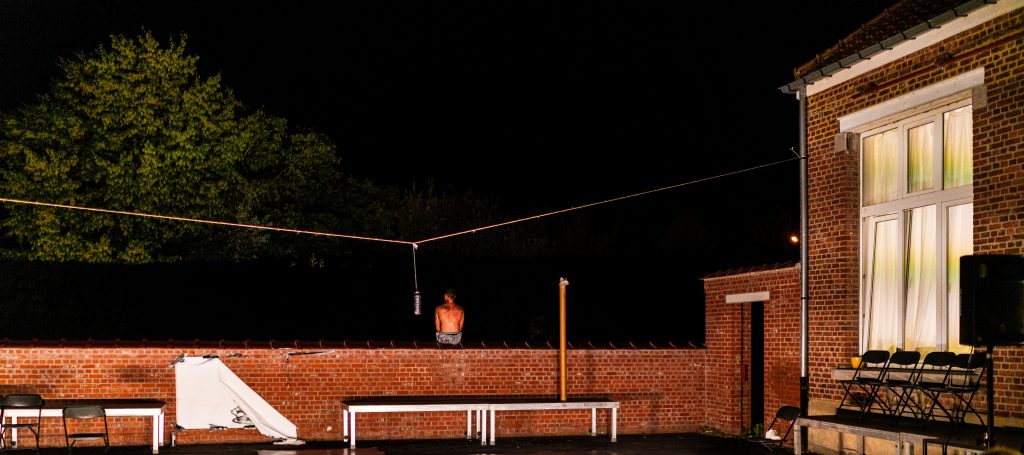
–
De School van Gaasbeek is a non-profit organization (vzw), established in 2013 by Hugo De Greef, Stefaan Loeckx, Elke Janssens, Christel Simons, Hugo Van Den Driessche, and Karlien Vanhoonacker. In the following years, Liesbeth Bernolet, Jonas Rutgeerts, Peter Devaddere, Wim Durang, Thomas Van Waeyenberge, Carl Verstraelen, Eva Van Remoortel, Koen De Visscher, Jasper Delbecke, and Veerle Van Mello joined as members or board members. Not everyone stayed, but most did.
In the early years, Christel Simons was not only a board member but also responsible for daily operations. She gave a bold shape to the start of the organization with the programming of the first SeptemberFestivals, the first residency program, and more!
Hugo De Greef has been the chairman throughout these years and has served as the executive chairman since 2017.
The organization relies on several volunteers: Fons De Baerdemaker, Peter Devaddere, Wim Durang, Marijke Vansteenbrugge, Eva Van Remoortel, Edith Leen, and Kaatje Stickers. Many board members regularly volunteer as well. Since 2023, Merel Van Wambeke has been an employee at “De School.” And let’s not forget Carlo Bourguignon, the technician and producer for SeptemberFestival.
Over the years, there has been a great concern for design, layout, and visuals! In the early years, this was handled by Stefan Loeckx. However, the most significant collaboration has been with Studio Omen, Sam Gubel, and Tom Leunen. They take care of the website, design of posters and flyers, distribution of newsletters, and social media. They have been a true partner in the project. In recent years, we have also had the opportunity to work with top designer Aline Billiet. She primarily designed special pieces such as the publications related to the “VriendenAvonden” and the EgmontLezing.
–
And further.
No one knows how things will go…! De School van Gaasbeek wants to remain present for the region and for the artists. Our activities will certainly continue to take place in various locations in the village and surrounding areas. In recent years, a lot has happened; things have shifted, new opportunities have emerged, and some have fallen away…! This will not be different in the coming years. We will keep you informed!
